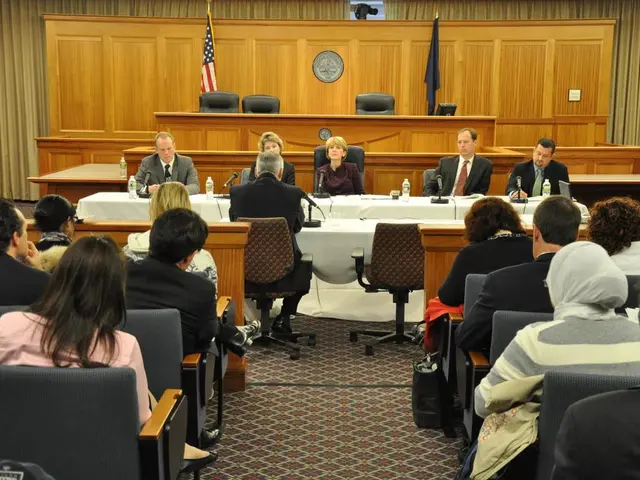Trump's efforts to question the validity of employment figures met resistance on Friday. Here's an explanation of the report's execution.
The Bureau of Labor Statistics (BLS), an independently operated body within the US Department of Labor, has been tracking the nation's labor market since its establishment in 1884. The BLS is responsible for collecting, revising, and reporting comprehensive employment data, including monthly updates and annual revisions to reflect labor market trends accurately.
One of the key tasks of the BLS is to measure employment levels, unemployment rates, and job openings to provide insights into the labor market's strength and weaknesses. The BLS achieves this through two surveys: one provides demographic data and the unemployment rate, while the other offers data on pay, hours worked, and the number of jobs the US economy added or subtracted.
Between 1979 and 2003, the average monthly revision was 61,000 jobs. Since 2003, the average monthly revision has slightly improved to 51,000 jobs. However, it's important to note that there have been larger revisions outside of the pandemic as well. For instance, a 143,000-job revision in January 2009 was recorded.
During the pandemic, jobs numbers were all over the map. Revisions in four months during 2020 and 2021 were bigger than the revisions from the most recent monthly report. The largest-ever revision of 679,000 jobs occurred in March 2020, attributed to particularly poor survey responses during a nationwide lockdown.
The BLS report has its challenges, such as the household survey's volatility due to its smaller sample size and declining response rates. Despite these challenges, the business and government employment survey is widely considered by economists to be the gold standard.
It's worth mentioning that the BLS protects the raw data and its estimates by processing them through statistical tests. The report also revises the previous two months' jobs totals due to late reporting of payroll data and the need for seasonal adjustments.
The BLS commissioner does not have the power to manipulate the data. In fact, former BLS commissioner William Beach, who served during President Trump's first term, also did not have such powers.
The BLS's survey data is used by the National Bureau of Economic Research to determine whether or not the economy is in a recession. Every month, the BLS produces the Employment Situation Summary, also known as the monthly US jobs report.
Recently, Trump has complained about a preliminary annual revision that was issued in August 2024, which showed the US economy had added 818,000 fewer jobs over the past year than previously reported. Despite this, the BLS remains committed to providing accurate and timely labor market statistics.
Read also:
- ICE directed to enhance detention conditions following NYC immigrants' allegations of maltreatment
- Israeli finance minister issues warnings about potential annexation of West Bank territories
- United States faces rebuttal from South Africa over allegedly deceitful human rights report and assertions of land expropriation
- Accident at Rodalben Results in Injuries; Geoskop Area near Kusel Affected After Stormy Weather







